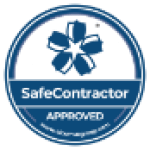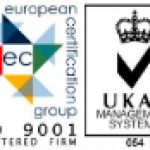The Different Types of Metal Finishes in Steel Fabrication
The final step of any fabrication process is the finishing of the metal. This process can give the metal a completely different aesthetic as well as adding a durable layer and decreasing the risk of corrosion. The type of finish used can depend on the use of the product as well as the environment it is going in. At C&C Fabrications, we can provide expert advice on all types of metal finishes and recommend the best type based on your requirements.
In this blog we’ll take you through the different finishes available and how to ensure you’re choosing the correct one.
Powder Coating
Powder coating is a dry finishing process that uses dry powder to coat metal materials. The science behind powder coating is that an electric charge causes the powder to fuse to the surface of the metal, allowing it to then dry. Once the powder has been applied, it is then cured with heat, this is usually in a large oven where it is left until completely dry all the way through. It is a commonly used method in the fabrication industry due to its functionality and durability. Powder coating can also smooth out any defects that may have appeared during the fabrication process, giving a cleaner finish to the product.
Advantages
- Gives the metal a layer of protection to help reduce rust and damage
- A very durable method of finish that will stand the test of time
- A consistent colour finish can be achieved
- It is non-toxic and a lot less flammable than wet spray paint finishes
Galvanised Finish
Galvanised steel is the process of immersing clean steel into molten zinc to form a protective coat through a metallurgical bond. This process is used across a range of industries including rail, oil, energy and water and waste. The versatility of this method is a reason it is used so frequently as well as also creating many benefits for the fabricated product that is galvanised. After galvanisation, an additional coating of paint can be added if needed for aesthetic reasons.
Advantages
- It is one of the most durable forms of corrosion protection, with an average coating thickness of 85 microns.
- In terms of energy and environmental impact, this process is sustainable, especially compared to similar finishing methods.
- Although this process is perceived as expensive, it is in fact the opposite.
Corten Coating
Corten coating provides a weathered, orange look. After the coated metal has been exposed to weather, a rust-like appearance forms It eliminates the need to paint or coat metal once it has been fabricated.
This type of coating was originally used in the 1930’s for structural beams, traffic poles and railroad cars. Since then, it has evolved to its current use of corrugated roofs and other fabricated products.
Advantages
- Corten steel is anti-corrosive, meaning its lifespan is increased. The naturally-forming rust means corrosive properties cannot form on the steel and therefore reduces costs long-term.
- A corten coating removes the need for the steel to be painted or coated in anything else. This also helps to reduce costs and also acts as a 2-in-1 finish as it protects as well as changes the aesthetics of the steel.
- This method is durable and increases the strength of the steel, making it perfect for heavy-duty structures.
Other Types of Finish
The list doesn’t end there for the types of finish we can apply to a fabricated product. We have a host of other coatings that can be used depending on your requirements and the use of the fabricated product.
It isn’t just coatings that can be applied to achieve the aesthetics or function of a steel item. Sometimes the actual material used can be fit-for-purpose. We can fabricate items made from stainless steel and other types of metal that don’t require any finishes or any form of coating.
For more information, or if you have any questions on the type of metal finishing that would suit your requirements, get in touch via 01977 670 067 or email us at info@candcfabrications.co.uk.



